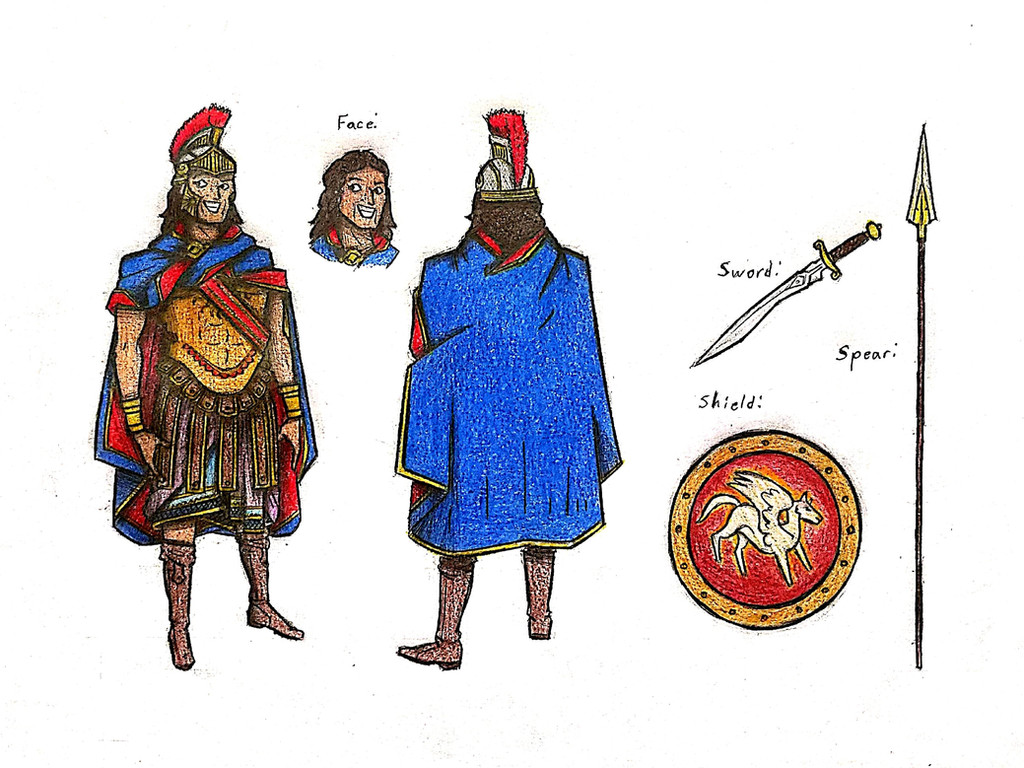HOME | DD
 Avapithecus — Hanno the Navigator
Avapithecus — Hanno the Navigator

#carthage #character #design #explorer #hanno #history #navigator #referencesheet
Published: 2023-06-03 13:32:38 +0000 UTC; Views: 3633; Favourites: 52; Downloads: 0
Redirect to original
Description
Hanno the Navigator is one of the most renowned explorers of the ancient world, which in some ways is a little surprising since we have only one written account of his famous voyage. The Periplus of Hanno, as the account is dubbed, was originally etched on a stone pillar in the Temple of Baal in Carthage, but the original has sadly been lost on account of that whole scorched to the ground by Romans ordeal. Turns out having your city burnt down is really bad for accounting. The text only survives in Greek translation, and while it is incredibly vague, it's kind of all we have to work with. It doesn't even tell us exactly who Hanno is or when this expedition took place. Most sources I've read tend to tentatively identify Hanno with the son of Hamilcar who was King of Carthage in the early 5th century BCE, but I should note there's nothing in the text that explicitly says the two Hannos are the same person. He is identified as a "Basileus" by ancient Greek authors, and while this does technically mean "king", I should note that the Greeks had a tendency to apply this term to any high ranking foreign official, so the Navigator still isn't necessarily the same as the Magonid king. For the sake of world building and simplicity, I've decided to go with this interpretation, and really because there's not much of a satisfactory alternative anyways.So to what ends of the Earth did Hanno's voyage take him? Well, the exact distance depends on which scholar you argue with, but most people will tell you his expedition brought him into deepest Africa, that most ancient, beautiful, and mysterious cradle of humankind. Likely on the hunt for the source of tin, which back then was a rare and valuable resource often only obtained through middle men, Hanno set out from Carthage some point around the early 5th century BCE. Passing through the Pillars of Hercules (what we now call the Strait of Gibraltar) with a fleet of sixty ships, Hanno first docked with the Carthaginian colonies already settled just beyond the Pillars along the shore of what we now call Morocco. Once restocked, the voyage carried forth into the lands of the Lixites, an Amazigh people from whom they recruited interpreters. They continued forth and established a colony called Cerne, which was reportedly as distant from the Pillars as Carthage is in the opposite direction. The exact location is unclear, but is usually identified as somewhere near the Bay of Arguin. Just south, their voyage crossed over the opening of the Chretes River, usually identified as the Senegal.
The further south they went, the more they encountered the jungle wildlife which Africa hides below the Sahara. Raging rivers full of crocodiles and hippopotamuses, great fog-topped mountains rising above the trees, and dark-skinned men speaking a language that their Lixite interpreters were unable to understand, likely speakers of one of the Bantu tongues, though that's only speculation. Creeping along the shore for a few days more brought them to witness the eruption of a volcano located in a place called the "Horn of the West". The Periplus claims the locals called the flaming mountain the "Chariot of the Gods", and was likely Mount Cameroon. Understandably scared shitless by this fairly obvious display of divine wrath, not to mention the eerie chorus of drums and pipes of Bantu tribesmen echoing from the forest, the Carthaginians just kept on going without bothering to try to dock and resupply. Their flight brought them to the "Horn of the South", likely in what is today Gabon. Here they attempted to dock, but unfortunately they were beset by a tribe of aggressive, rock-throwing hairy men which the interpreters called "gorillae". And yes this is where we get our modern word for the giant ape, though as far as I can tell, it's actually unclear if the species Hanno encountered was actually a gorilla. Gorillas don't normally attack unless provoked, which… to be fair, Hanno does record that they battled the hairy men and flayed the skins of the women to take as prizes back to Carthage. That sounds pretty provoked to me, but tragically the gorillas haven't left us a written record to explain their side of the story. Look, I'm not gonna write the book about a generations-long conflict of arms and diplomacy between Carthage and the gorillas, but I won't stop you from doing so.
Design notes, my interpretation of Hanno the Navigator is largely based off of an illustration of the Carthaginians' encounter with the gorillas found in a 1915 book by John Lang titled "The Land of the Golden Trade". I didn't read it, but it's supposedly an analysis of the exploration of Africa from the Phoenicians to the 20th century. Being written in 1915, I can only assume it has less than stellar opinions on the indigenous peoples of Africa, so it's probably best I didn't skim through lest I get an aneurysm. The bottom part of his tunic I sourced from an 1882 engraving by… Bertrand. That's it, just Bertrand. I don't know if that's his first or last name, but that's all every site hosting this engraving cites him as. Thanks internet, glad I can always count on this miraculous sum total of human knowledge we've created. I mean okay it was made in 1882 so I don't technically have to credit the guy since it's public domain and he's probably dead but I like to cover my tracks. As always, if anyone can provide any additional information, citations are more than welcome.






















